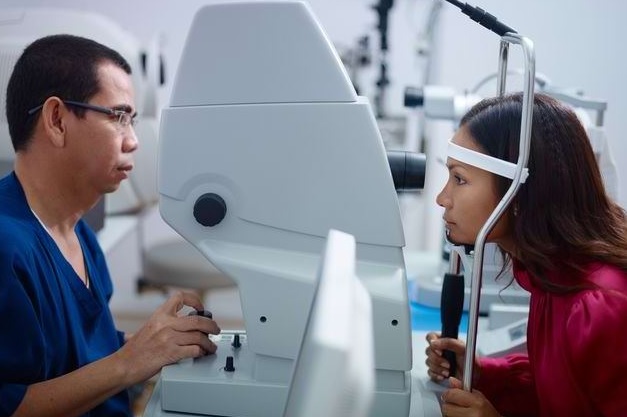
Working in front of the screen with close reading or often using eye function should be limited to maintain eye health. Precisely during the Covid-19 pandemic when most of people are urged to work from home.
Prof. dr. Suhardjo SU Sp.M (K), Professor of the Faculty of Medicine, Public Health and Nursing (FKKMK) UGM, expects that many parties will concern about this issue. A Covid-19 period forced many people must undertake their jobs by looking or reading from their screens through a laptop or smartphone.
Thus, according to him, we must take a break for 5-10 minutes every 30 minutes. Then the work of viewing or reading should be done in a well-lit room, at least with an intensity of lights> 3000 lux.
“Besides doing exercise every day in an open space for 30-60 minutes, some research data shows the lack of daily movement in children. It indicates that it has the risk of increasing the size of minus glasses (Myopia), even though they are currently at home,” he said, at UGM’s FKKMK on Tuesday (5/5).
Myopia is an eye refraction disorder, which is also called a minus eye or nearsightedness. People with Myopia are not able to capture the shadow of objects that are far away located right on the retina. This condition causes people with Myopia to have difficulties when seeing distant objects, but it is clear when seeing near objects.
“A person is called that she or he has Myopia when their glasses needed minus more than 0.5 diopters to correct vision. It is a disease that cannot be treated and continues to grow, but can be controlled by its progression,” Suhardjo said.
In his research with Dr. Mohammad Nafis Sabirin Mara mentioned the reasons for the process of Myopia are closely related to the length of the eyeball. As a baby, the length of the eyeball tends to be short, then as we get older it will develop and reach a standard height at the age of the children (around the age of 11 years), and if the process of increasing the eyeball length exceeds, then someone should have Myopia.
“High Myopia can develop into complications of increasingly severe disease such as glaucoma, retinal detachment, cataracts, and maculopathy. “Besides, early Myopia that has not immediately fixed properly will risk obstructing the development of visual function that causes lazy eye sufferers, amblyopia,” he said.
Citing Kovin’s opinion, Suhardjo, in his research, said the impact of social and economic losses due to Myopia. The world loss due to Myopia in 2015 was equivalent to 250 billion US dollars. There is estimation presented that the cost of managing Myopia in the world is around 20 billion US dollars for five years, while the evaluation of potential loss of world productivity related to untreated Myopia is at 244 billion US dollars per year.
“This figure can illustrate how Myopia has a tremendous social and economic impact. Therefore, since it is very vital, we need to pursue the prevention or control of Myopia,” he added.
Various studies show that more time spent outdoors is effective in preventing or delaying the onset of Myopia. Sun exposure (3.3 hours per day) during outdoor activities significantly reduces the risk of Myopia.
Also, limiting the time for close reading and viewing the screen on electronic devices such as smartphones and televisions is very useful. Delaying the onset of Myopia or slowing the rate of development of Myopia will reduce the likelihood of complications and broader adverse effects.
He added that correct eyewear correction could significantly prevent Myopia progression. Likewise, with the administration of cycloplegic drugs, 0.01 percent atrophic sulfate eye drops once per day affects preventing the progression of Myopia.
“These prevention efforts are outstanding if those can be understood at various levels of society both the family level, school institutions, and government policies,” he concluded.
Author: Agung Nugroho
Photo: Alodokter.com
Translator: Natasa A

